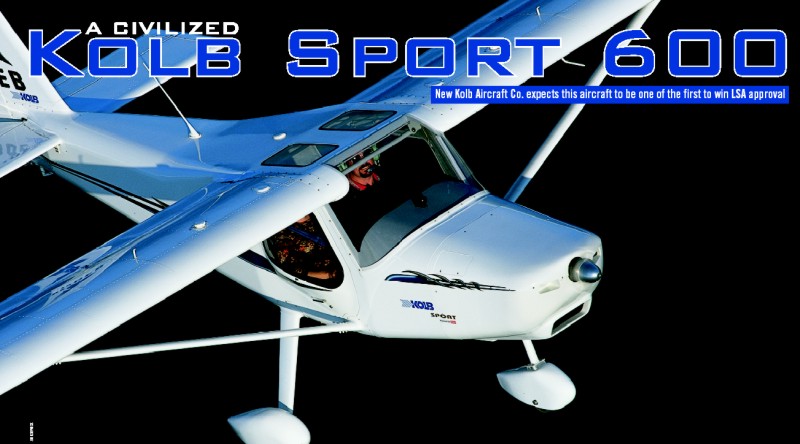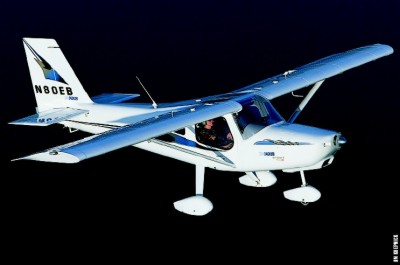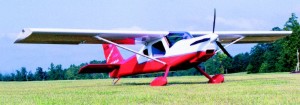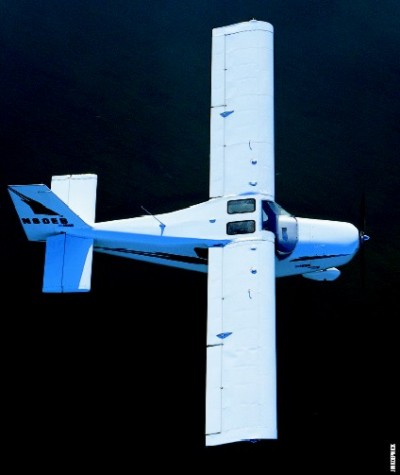
My first thought when I exited the Kolb Sport 600 after flying it was, “This is a very civilized aircraft.” Is that typical of what we can expect when light-sport aircraft (LSA) become the law of the land? I sure hope so|though I also hope Part 103 ultralights and kit aircraft continue to enjoy a solid share of the overall market. With its sleek composite exterior, all-metal wing, custom interior, international (Canadian) design heritage, and cross-country performance, the Sport 600 from New Kolb Aircraft sets a pace others may hope to follow. My test airplane for this month’s article was the personal property of New Kolb Aircraft owner Bruce Chesnut. That explains the gorgeous interior finished by a professional in Alabama: Leather-covered seats and fittings, tasteful embroidery, and beautifully formed and finished plastic covers graced the aircraft. Bruce’s Sport 600 also had attitude (IFR, or instrument flight rules) instruments, which is rare in the ultralights or kit-built aircraft I typically review.








